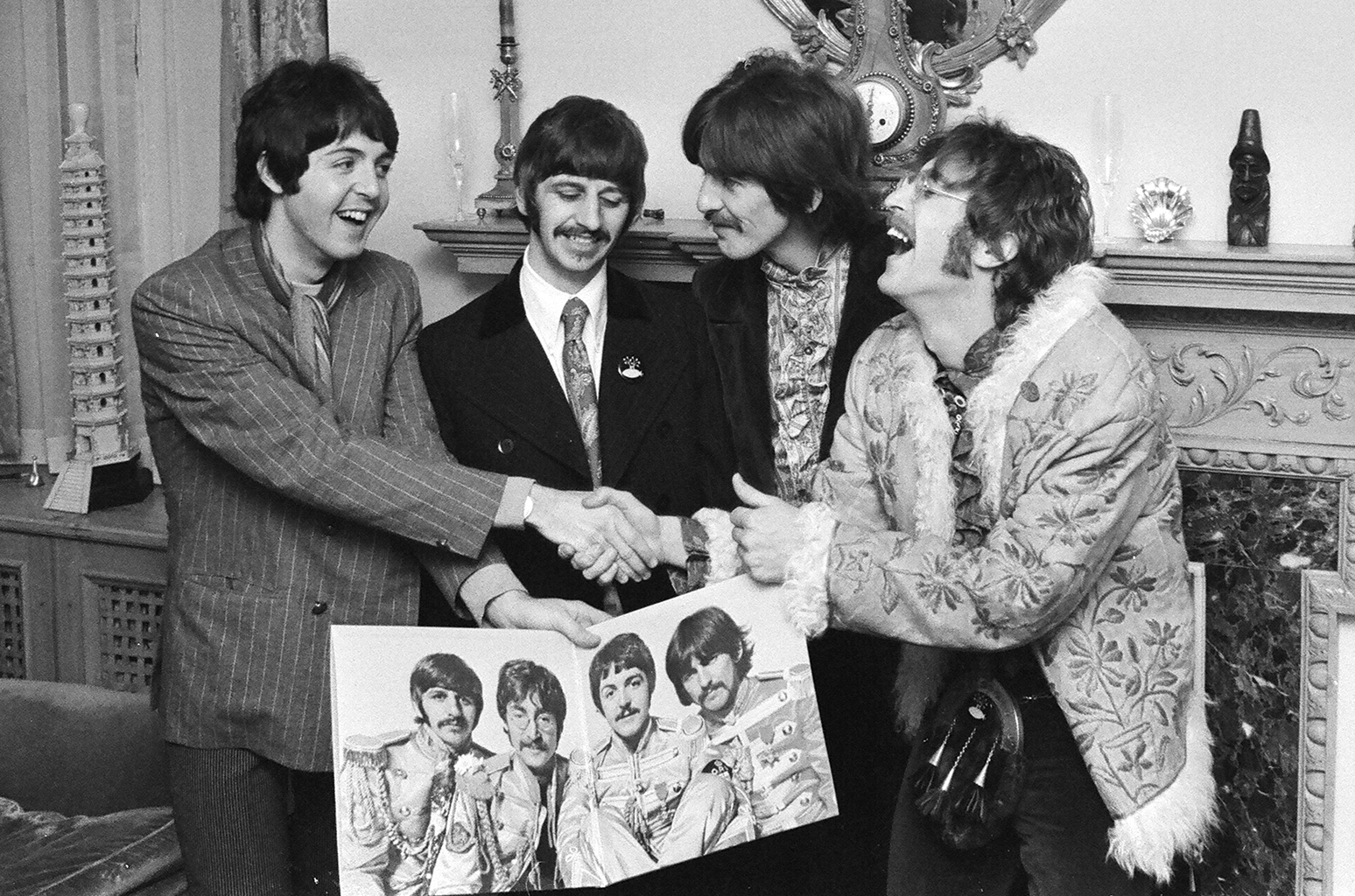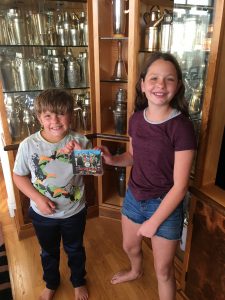I was just two years old – and therefore too young to notice or remember – when Elvis Presley made his first appearance on The Ed Sullivan Show on September 9, 1956. More that sixty million people tuned in to watch, a number that dazzles to this day. (In fact, they saw neither Elvis nor Ed Sullivan in Sullivan’s New York Studio. Presley was filming his first movie in Hollywood, so he performed from a local CBS studio. Ed Sullivan was on medical leave, recovering from a head-on collision suffered a few weeks earlier. It was the Oscar-winning English actor and director Charles Laughton who subbed for Ed Sullivan that evening. He introduced Elvis by saying, “Away to Hollywood to meet Elvis Presley.” The scene shifted to Elvis, wearing an absurd plaid jacket that made him look like a used car salesman. After acknowledging that being on the Sullivan show was “probably the greatest honor I have ever had in my life,” he began his mini-set with a performance of “Don’t Be Cruel”.)
So I missed out on Elvis’ spectacular national premiere. But I was old enough to watch and remember the next epochal event to occur on the Ed Sullivan show, and no, I’m not referring to Topo Gigio’s first appearance in 1963. Rather, I’m referring to Sunday, February 9, 1964 when – two months before my tenth birthday – the Beatles made their American debut on the Ed Sullivan show.
My family and I were among the seventy million people who tuned in that evening to watch; I remember saying to my father that their longish hair made them “look like girls.”
Whatever; I fell in love; the Beatles were my entrée to Rock ‘n’ Roll. And while I would fall in lust with many rockers, my love for the Fab Four has endured: it’s one that continues to this day and it’s a love that I have passed on, quite successfully, to my four children.
Today we celebrate a Beatles milestone. 51 Years ago today – on September 10, 1967 – the Beatles’ album Sgt. Pepper’s Lonely Hearts Club Band hit number one on the United Kingdom sales charts. It remained at number one for 27 weeks: almost seven months. (For our information, Sgt. Pepper’s first appeared on the UK charts on June 3, 1967, and remained on the charts for an astonishing 149 weeks: almost three years!)
Clocking in at exactly 39 minutes and 52 seconds, Sgt. Pepper’s Lonely Hearts Club Band was the Beatles’ eighth studio album. It took over 700 hours to record between November 24, 1966 and April 21, 1967 at EMI’s Abbey Road Studio Two, at no. 3 Abbey Road in London’s West End. Although the official release date is still listed as June 1, 1967, the album was actually released 5 days earlier, on May 26.

(Photo by Sunday People/Mirrorpix/Mirrorpix via Getty Images)
A very few critical codswallops aside, Sgt. Pepper’s was almost universally acclaimed for the quality of its songs; for it’s amazing innovations in musical production; and for its cover, which was designed by the English pop artists Jann Haworth and Peter Blake. (For our information, it was also the first album to print its lyrics on the album sleeve.) Acclaimed for synthesizing popular music and art music, Sgt. Pepper’s won four Grammy Awards in 1968, including Album of the Year. Of huge significance: it was the first rock ‘n’ roll album to be so honored.
Not bad for a group that a year earlier was almost totally burned out and was considered, by many in the critical community, to be on its last legs.
At the time the Beatles released Revolver – their seventh studio album, on August 5, 1966 – they were exhausted, dispirited, and totally disenchanted with live performance. According to John Lennon, they could:
“send out four waxworks [figures] and that would satisfy the crowds. Beatles concerts are nothing to do with music anymore. They’re just bloody tribal rites.”
Disastrous tours of Japan (where the group received death threats), the Philippines (where fans rioted when the boys declined to visit First Lady Imelda Marcos) and the United States (where protests over John Lennon’s statement that the Beatles were “more popular than Jesus” dogged their performances) led the group to decide that they would tour no more. Their final live concert took place on August 29, 1966, at San Francisco’s Candlestick Park.
On returning to England, George Harrison informed the group’s manager Brian Epstein that he was done, that he was leaving the group. Epstein managed to change Harrison’s mind by swearing that there would be no more tours. Nevertheless word got out, and rumors began to fly that the Beatles were breaking up.
But they didn’t break up. Instead, they parted ways and took vacations. When they reconvened in late November it was at the Abby Road Studios in London, there to record their eighth album. George Martin, the Beatle’s producer (and the techno-wizard behind so very many of the innovations that mark both Revolver and Sgt. Pepper’s) remembered:
“It was going to be a record [with songs that] couldn’t be performed live: they were designed to be studio productions and that was the difference.”
Paul McCartney declared: “Now our performance is that record.”
On December 6, 1966, the Beatles began work on the first song that would be included in the album, “When I’m Sixty-Four”.
The “eureka!” moment – the epiphany that was to raise Sgt. Pepper’s from just another rock ‘n’ roll album to a singular work of art – came in February, 1967. The group had just finished recording a song by Paul McCartney entitled Sgt. Pepper’s Lonely Hearts Club Band when Paul came up with an idea: that the entire album should represent a concert by a fictional band led by a fictional Victorian band master named Sgt. Pepper. As Paul later explained, “I thought, let’s not be ourselves. Let’s develop alter egos.”
George Martin went gaga (pun intended) over the idea:
“‘Sergeant Pepper’s was Paul’s song, just an ordinary rock number. But when we had finished it, Paul said, ‘Why don’t we make the album as though the Pepper band really existed, as though Sergeant Pepper was making the record? We’ll dub in effects and things.’ I loved the idea, and from that moment on it was as though Pepper had a life of its own.”
Meanwhile, the press was having a field day. Five months and 700 hours to record a rock ‘n’ roll album? It doesn’t take 700 hours to record Wagner’s Ring Cycle! McCartney remembered:
“Music papers started to slag us off because [Sgt. Pepper’s] took five months to record, and I remember the great glee seeing in one of the papers how ‘the Beatles have dried up’, and I was rubbing my hands, saying ‘You just wait.’”

Just you wait indeed! Sgt. Pepper’s went on sale on May 26, 1967 and the rest is history.
From that point on, the Beatles remained a “recording only” group. Two more albums followed: The Beatles (also-known-as the White Album, in 1968) and finally, Abbey Road (in 1969).
The final mixing of John Lennon’s Song “I Want you (she’s So Heavy)” – which closes side one of Abbey Road – took place on August 20, 1969. That occasion marked the last time the Beatles were together in a recording studio. Two days later, on August 22, 1969, the group got together for a photo shoot at John Lennon and Yoko Ono’s manor house called Tittenhurst Park, in Berkshire, England. The four members of Beatles were never together as a group again. John announced his “divorce” from the group a month later, on September 20, and the group was officially dissolved in 1970.
The Beatles – as we know the group, with Ringo Starr as its drummer – were active for less than 8 years: from 1962 to 1969. But oh what a wonderful noise they made!
For a discussion on the advent of rock ‘n’ roll, I would direct your attention to my Great Courses Survey, “Great Music of the 20th Century” (On Sale Now).
Listen on the Music History Monday Podcast
Podcast: Play in new window
Subscribe: Apple Podcasts | Spotify | Pandora | iHeartRadio | RSS | More
Robert Greenberg Courses

How to Listen to and Understand Great Music, 3rd Edition
Price range: $349.95 through $599.95 Select options This product has multiple variants. The options may be chosen on the product page
Great Music of the 20th Century
Price range: $199.95 through $319.95 Select options This product has multiple variants. The options may be chosen on the product page

